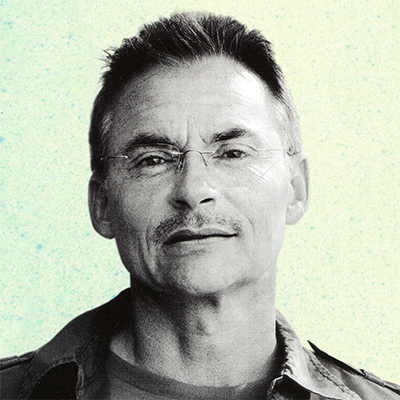4 Due Regard for the Earth-Moon Ecosystem
An Interview with Dan Hawk
D.D. Hawk, Iroquois Confederacy Oneida and Diana Mastracci Sánchez
The following is an interview conducted by Diana Mastracci Sánchez with Dan Hawk, Co-Founder of Galxyz and Principal Scientist for the United First Nations Planetary Defense.
When the public considers the damaging environmental effects of technology on the environment, they do not often conceive of outer space as an immediate, pressing concern. For this reason, could you tell us more about the “Earth-Moon” ecosystem, why it is important, and what are some of the greatest threats are regarding current and future space activities?
Earth relies on the Moon’s tidal lock and supports our biosphere as we know it today for this reason the Earth-Moon ecosystem is important. In the second sentence of Article IX of the Outer Space Treaty of 1967, we are to avoid the introduction of harms to the Moon that would adversely impact Earth this matters because the large engine lunar dust ejecta will be blown off the surface of the Moon’s one-sixth gravity with no atmosphere and enter space. The Precautionary Principle tells us since we do not yet know how the cumulative environmental impact of lunar dust ejecta in space will adversely impact the Earth’s biosphere, we ought to be concerned enough to ask questions about the possibility of Earth harm in respect to the Outer Space Treaty.
Because of the increasing launch cadence and deployment of thousands of satellites along with an ever-increasing amount of orbital space debris, many orbital altitudes are becoming congested and increase collision risk. Recently there has been a concern and discussion about satellite carrying capacity where soon, when we deploy a satellite, it will exponentially increase the probability of conjunction between two space assets. In other words, our orbital space is not infinite because the probability of satellite or debris collisions would become unacceptable, and it matters when considering the costs of satellite insurance.
Importantly, a reduced satellite carrying capacity is a social justice issue because it will adversely Impact Indigenous People’s equal access to space at a future time, they wish to enter space. The United Nations states that space is for all, that we all have equal access to space, that space is a human right, that for Indigenous Peoples space is a right of self-determination, yet, thousands of more satellites and increasing orbital debris oppresses underrepresented People’s rights to enter space and is a form of space environmental racism.
Underrepresented Peoples need orbital space not just for their own sovereignty such as for climate change, but for the need of weather satellites to prevent harm from severe weather events. For example, tracking hurricanes can warn those who are most vulnerable to give them an opportunity to evacuate, to save lives. It is important for advance warning to also prevent property damage because the debris often ends up where underrepresented Peoples live and when this happens it is environmental racism.
You have advocated for the use of “due regard” to mitigate human exploration and exploitation of space resources. Can you explain what “due regard” is and how you believe it will help ensure a peaceful use of the Moon?
Due regard is used in Article IX of the Outer Space Treaty of 1967 such that we are to have due regard to the corresponding interests of all others in space and is like being a good neighbour. For example, we would not want to land next to a Chinese lunar vertical solar array when we know the engine dust ejecta would destroy them. Due regard in this respect, infers we consider the rights of others subjectively, in this example, we land in a place far enough away as not to cause the Chinese People harm by destroying their lunar solar asset. But there is more, we must also consider the inherent rights of all things, the Moon itself has an inherent right to be, as we noted in the second sentence of Article IX because harming the Moon may also harm us.
In Mauritius v. U.K. (2015) the tribunal stated that objective due regard was made up of four elements they are inherent rights in respect to who or what is being harmed, the extent of impairment to whom or what is being harmed, the value of the activity of the first State (the one doing the harm) and alternative approaches. When all is considered, inherent rights are inalienable and thus a constant. If a first State uses an alternative approach, the equation must consider a new alternative approach and thus is a constant. This means objective due regard is two of the four elements, the extent of impairment of the second State and the value of the first State activity. We can now objectively measure the value or when due regard is breached. This equation tells us what we ought to strive for when considering environmental harm, to minimize the extent of impairment while maximizing the value of the activity that is the cause of the harm. Due regard does not stop the first State’s activity to cause harm but demonstrates when the second State would need to be consulted regarding the extent of the harm.
Objective due regard on the Moon is important (but must also be used on Earth) because we can calculate a safe distance between two activities on the lunar surface and is different than picking an arbitrary Artemis Accords safety zone area that would otherwise violate Article II of the Outer Space Treaty by appropriation of the lunar surface by other means. In other words, if you know the safe distance to prevent harmful interference between two different activities based on the extent of impairment of each and between them, you know longer need to appropriate large areas of the lunar surface. An Artemis Accords safety zone is an exclusion zone and is Article II appropriation, where objective due regard is calculated for safe distance and does not appropriate the lunar surface. Non appropriation of the lunar surface upholds the Outer Space Treaty and will help keep the Moon peaceful.
Your work highlights the importance of recognizing the harmful effects of colonization in the context of human space exploration. How does decolonization play a role in reframing Safety Zones and promoting a more inclusive and cautious approach to lunar exploration?
Objective due regard safe distance is a notable example of decolonization because currently the Artemis Accords takes or designates land or in this case the lunar surface and draws a circle around it, inferring others cannot come inside this circular safety zone appropriating this amount of arbitrary surface area. The arbitrary safety zone is appropriation, such that land ownership to prevent other’s use is a colonizing practice that Indigenous Peoples know well. For example, Indigenous Peoples have known that one cannot own land, yet they were prevented from its use. On Earth we recognize this colonizing practice as forts, fences, and fines to prevent others from using the lands. On the Moon, a safety zone is an arbitrary area of surface appropriation.
The concept of non-interference and sustainability from Indigenous Traditional Ecological Knowledge (ITEK) is highlighted in the article. Can you explain how these principles relate to the determination of safe distance and the overall approach to lunar activities?
The activities on the Moon such as mining operations that, like lunar dust ejecta, cause harm to others nearby is interference or is a failure to provide due regard to the one being harmed. The Artemis Accord reason for creating arbitrary safety zones, is to prevent harmful interference between two nearby activities where one activity is causing more harm than the other. However, when considering all things are connected to all other things, harm becomes holistic and infers environmental impact creep. Objective due regard accounts for both the first State’s activities but also all activities resulting in an increasing cumulative lunar surface environmental impact. An example, one lander’s dust ejecta would not significantly impact the space environment but ten or one hundred would because more dust and debris would be ejected off the surface of the Moon and end up in the lunar ionosphere and in space. This matters because of the impact to Earth but locally to lunar orbiters and the Lunar Gateway Space Station.
There have been a hundred activities on or near the Moon, such as Apollo, surveyors, probes, impactors, orbiters, and autonomous landers, the last one being iSpace M1. We ought to expect as the Artemis Accords infers, hundreds of more lunar activities thus we must think differently, colonizing practices are harmful and are cause for conflict such as arbitrary appropriation. Indigenous Traditional Ecological Knowledge is an understanding that all things are connected to all other things, what we do to the strand in the web is felt in the entirety of the web. Due regard is about being respectful to others, to the Moon, our orbital space, and our space ecosystems.


